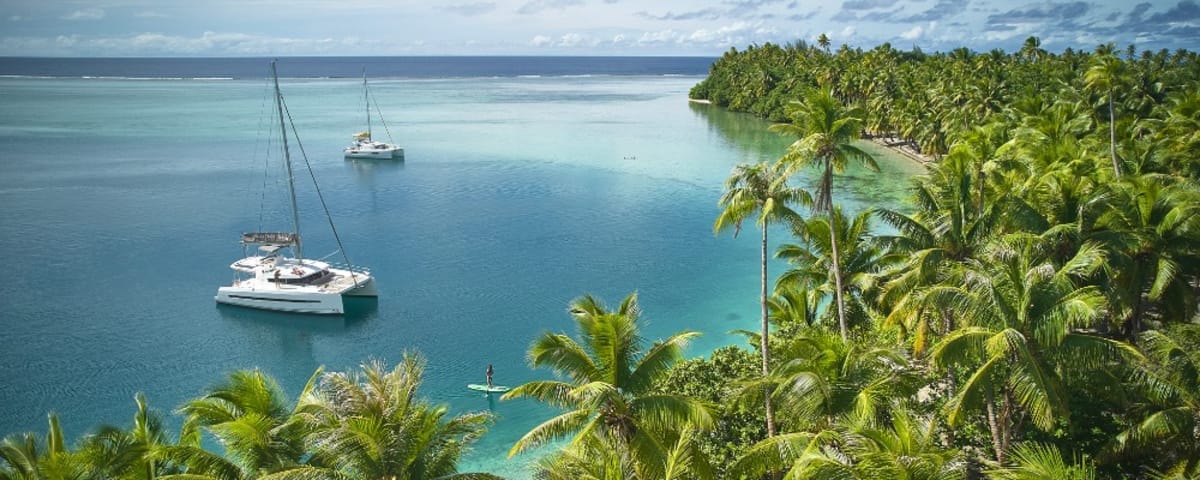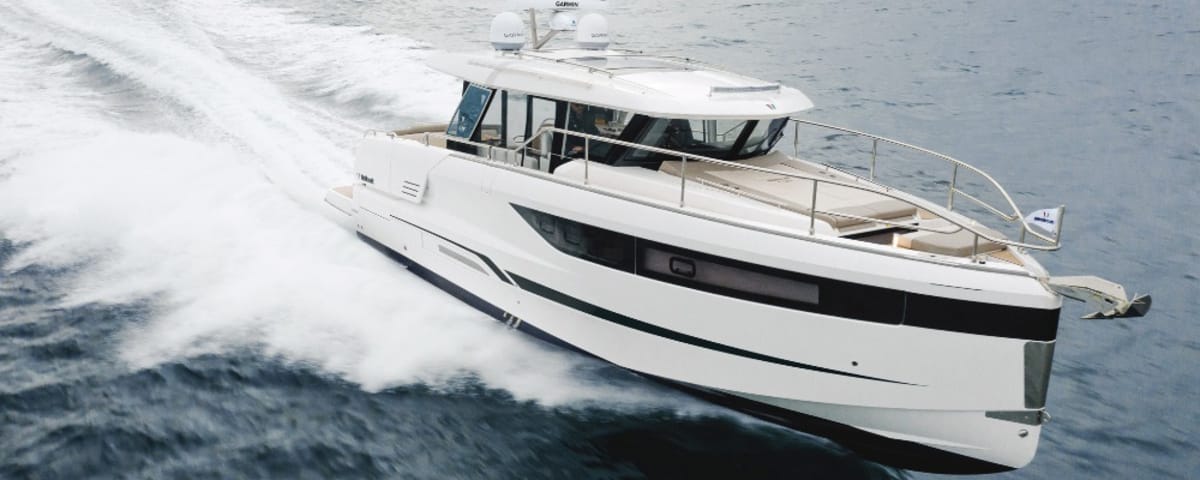GR63: A Concrete Vision of Emission-Free Yachting
Unlike many projects still in the study or prototype phase, the GR63 is an existing, tangible, and finalized unit. It’s no longer a promise, but a reality.
Designed to combine energy autonomy, clean propulsion, and a high level of comfort, the GR63 offers a concrete vision of what emission-free yachting can be, while respecting the demands of aesthetics, performance, and luxury.
An Intelligent Energy System for Complete Autonomy
The GR63 integrates a next-generation, fully electric energy system, managed by an intelligent management platform based on artificial intelligence. This system continuously monitors and optimizes the distribution of energy on board. It is capable of adapting priorities according to demand – propulsion, air conditioning, on-board systems – and environmental conditions.
This intelligent control system balances energy inputs from various sources:
- High-efficiency solar panels totaling 12 kWp
- Two vertical axis wind turbines totaling 10 kW
- A photovoltaic canopy and an energy-producing awning
- A 284 kWh LiFePO? battery
- And two methanol fuel cells (2 x 15 kW) as backup
In Thailand, where sunshine exceeds an average of 5.5 hours of full solar power per day, the photovoltaic installation alone allows a production of more than 66 kWh per day, reinforcing energy autonomy. According to Ricky Cole, technical director of ePropulsion, “the GR63’s electrical system sets a new benchmark, both in terms of integration and real long-distance performance.”
A Design Focused on Innovation and High-Performance Materials
The naval architecture of the GR63 was entrusted to French designer Alexandre Fortabat, who focused on a combination of innovative materials to ensure lightness and robustness. The structure of the catamaran is based on a composite combining basalt and aramid fibers, known for their excellent strength-to-weight ratio. This choice limits the environmental impact while guaranteeing high-performance marine behavior.
Inside, the attention to detail reflects a high level of requirement. The furniture incorporates materials selected for their durability and aesthetics: ash, oak, bamboo, ultra-thin stone, alcantara, titanium. The kitchen elements are designed around an induction hob and a hood embedded in the worktop. The storage units open by lateral translation, optimizing volumes and ergonomics.
Controlled Onboard Comfort Focused on Autonomy
The sustainable approach of the GR63 does not stop at propulsion. It extends to the onboard experience. The air conditioning is based on a silent DC motor inverter system, coupled with titanium heat exchangers. This device allows thermal comfort adapted to each living area, while limiting energy consumption.
Another particularity of the GR63: a space dedicated to hydroponic cultivation, which allows the production of fresh green vegetables on board. This installation is part of a logic of autonomy and reduction of on-board resources. It also reinforces the quality of life of passengers, by offering fresh products and foods with high nutritional value grown at sea.
Classified CE category A-Ocean, the GR63 is designed for offshore navigation, with a configuration that meets both the technical requirements and the expectations of an audience fond of long and comfortable cruises.
With this project, Gilles Reigner, a physicist by training, confirms his commitment to more sustainable maritime transport. In Hua Hin, Thailand, he has brought together a technical team capable of realizing an ambitious vision: that of an autonomous, emission-free luxury yacht, ready to sail this year. An upcoming announcement will formalize the launch of the unit in the coming months.
For ePropulsion, a global player in marine electric propulsion, this achievement illustrates one of its major focuses: developing clean solutions for recreational and professional boating, with integrated, reliable systems designed to last.
Enjoyed this post by Thibault Helle? Subscribe for more insights and updates straight from the source.


